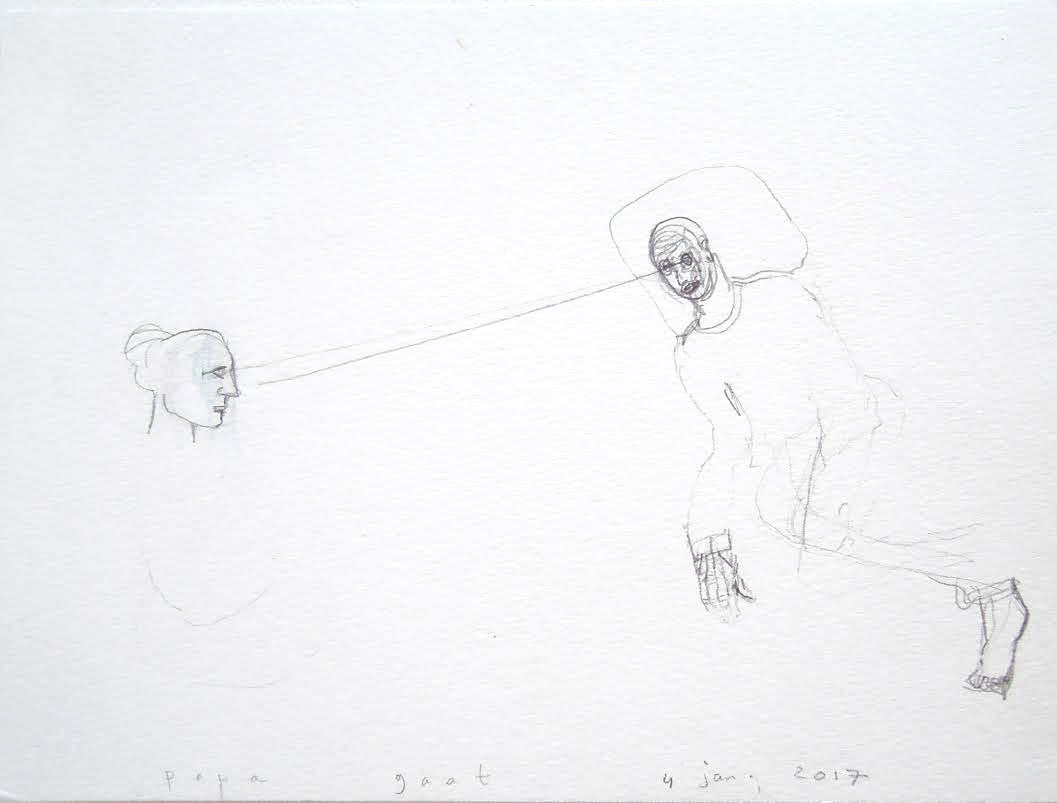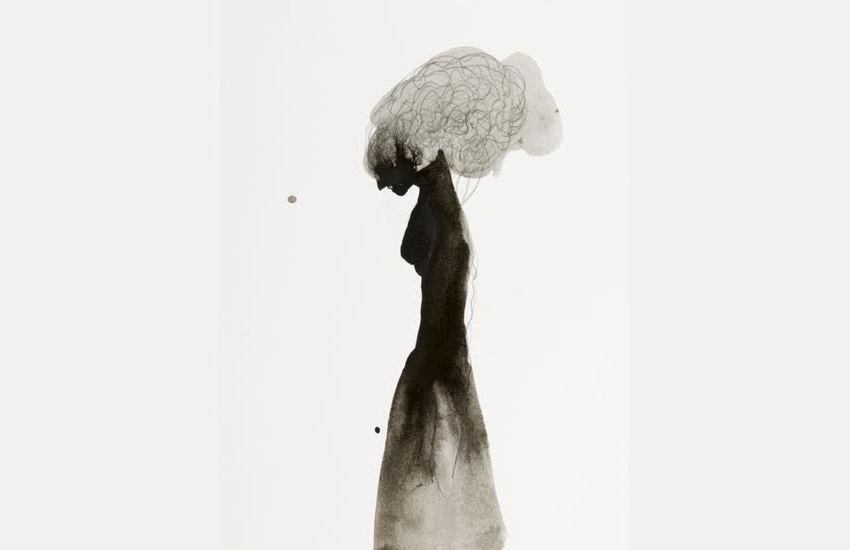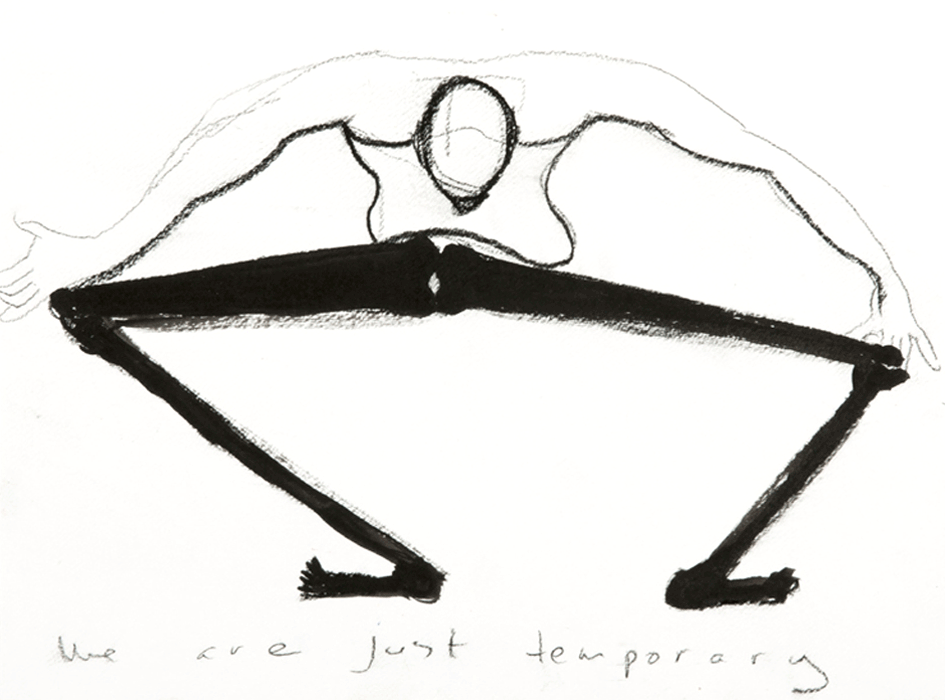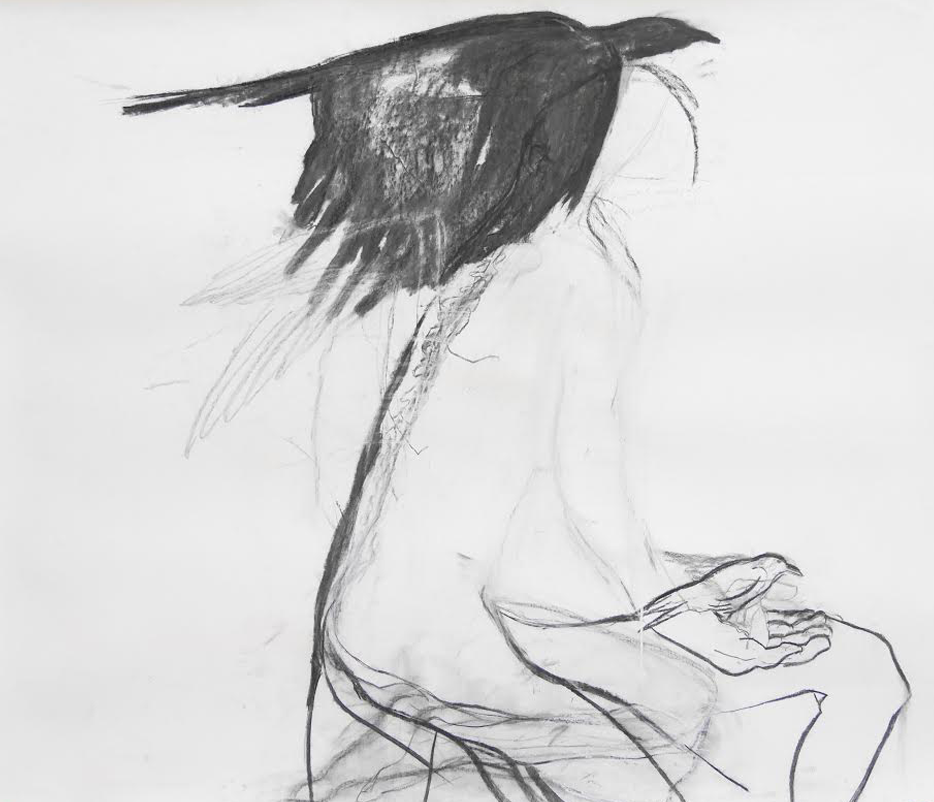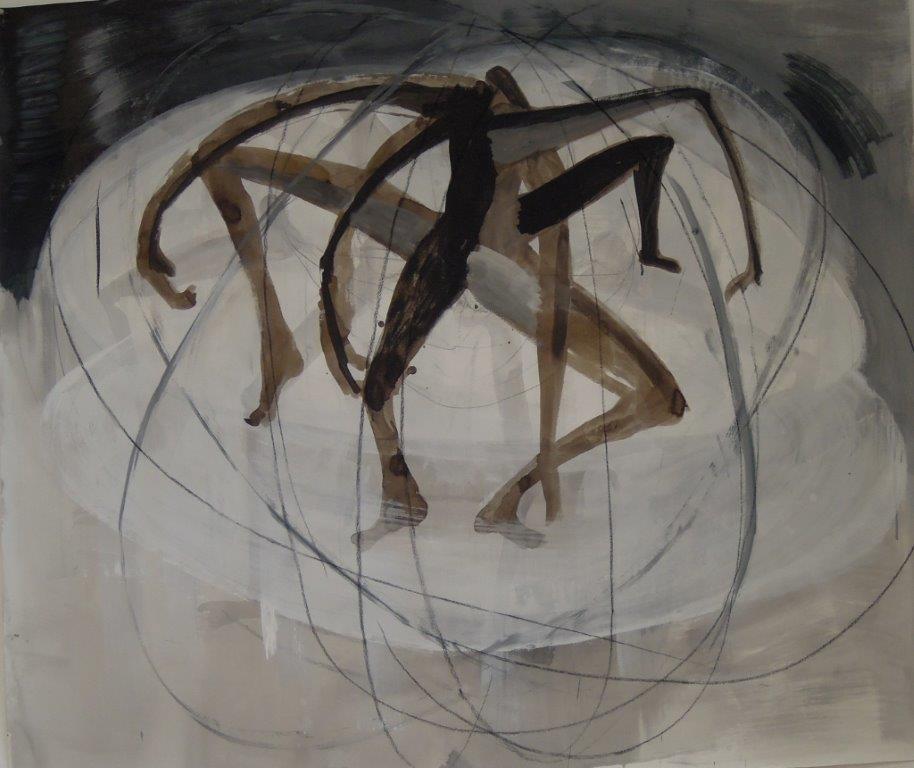REPORTER OF THE INNER WORLD
Mind expanding drawings by Stance Oonk
written by Richtje Reinsma
Left, a floating woman’s head and right a man dangling into nothing. A drawing by Stance Oonk ('s Hertogenbosch, 1959). At the bottom of the sheet of paper it says: 'daddy is going/papa gaat'. The body of a man is thinly sketched, an arm and a leg are already dissolved into the paper but the head is clearly visible. The throbbing eyes are drawn with nervous and powerful lines. From the eyes straight lines reach out to an eye of the floating woman’s head. An intense last contact is displayed with just strokes. Dark, hard pressed pencil lines and feather-light pencil lines in which the tip barely touches the paper. So echoes the pencil skeleton of the drawing, the story of the difficult release that every goodbye demands.
Stance Oonk’s drawings are intriguing and powerfully intense. At a glance they catch your eye and yet you are drawn in This may be due to the manner, methods and techniques of shining, smoldering and simmering she uses in her work or because her presentations are somewhat similar to visual oracles and diagnoses.
